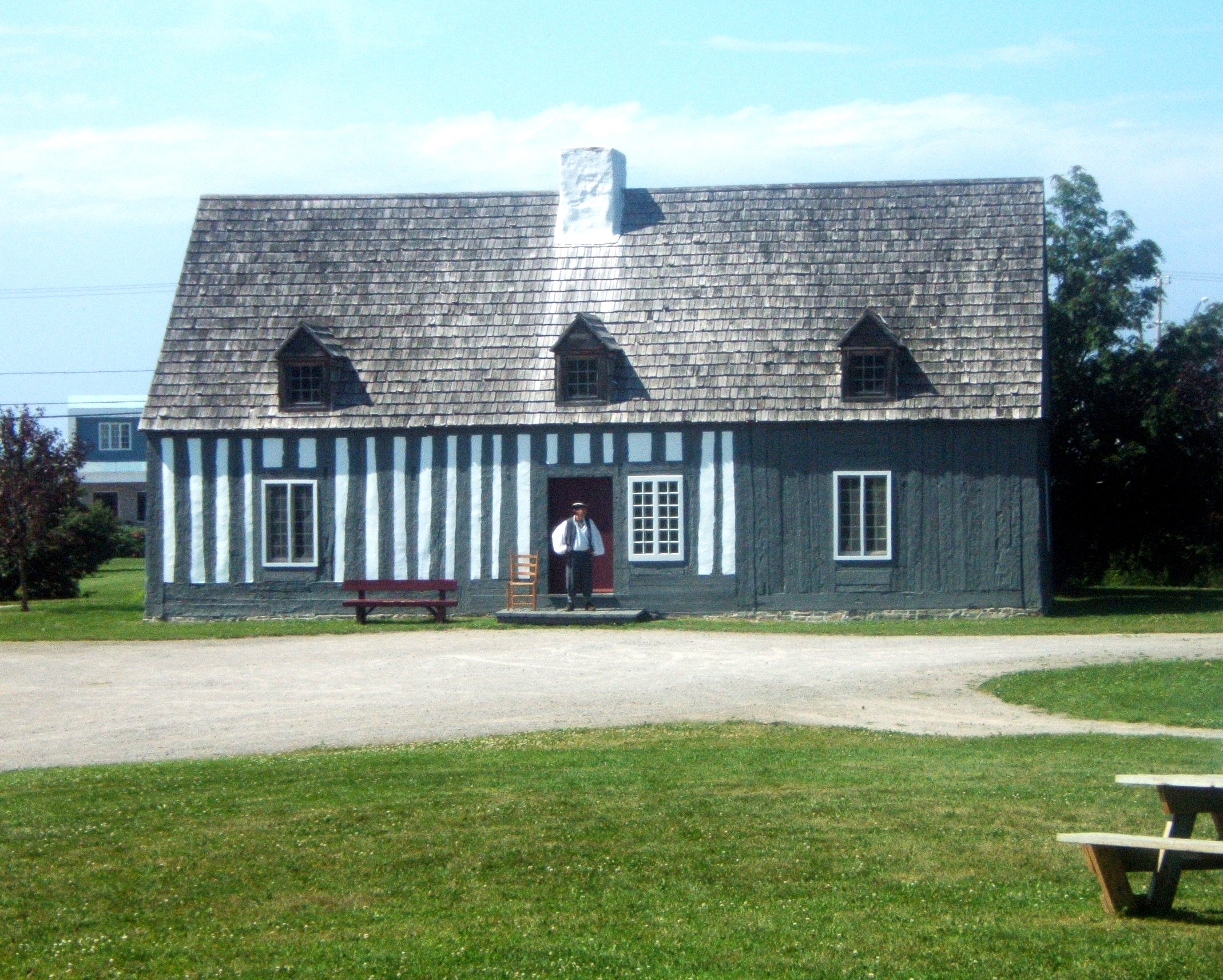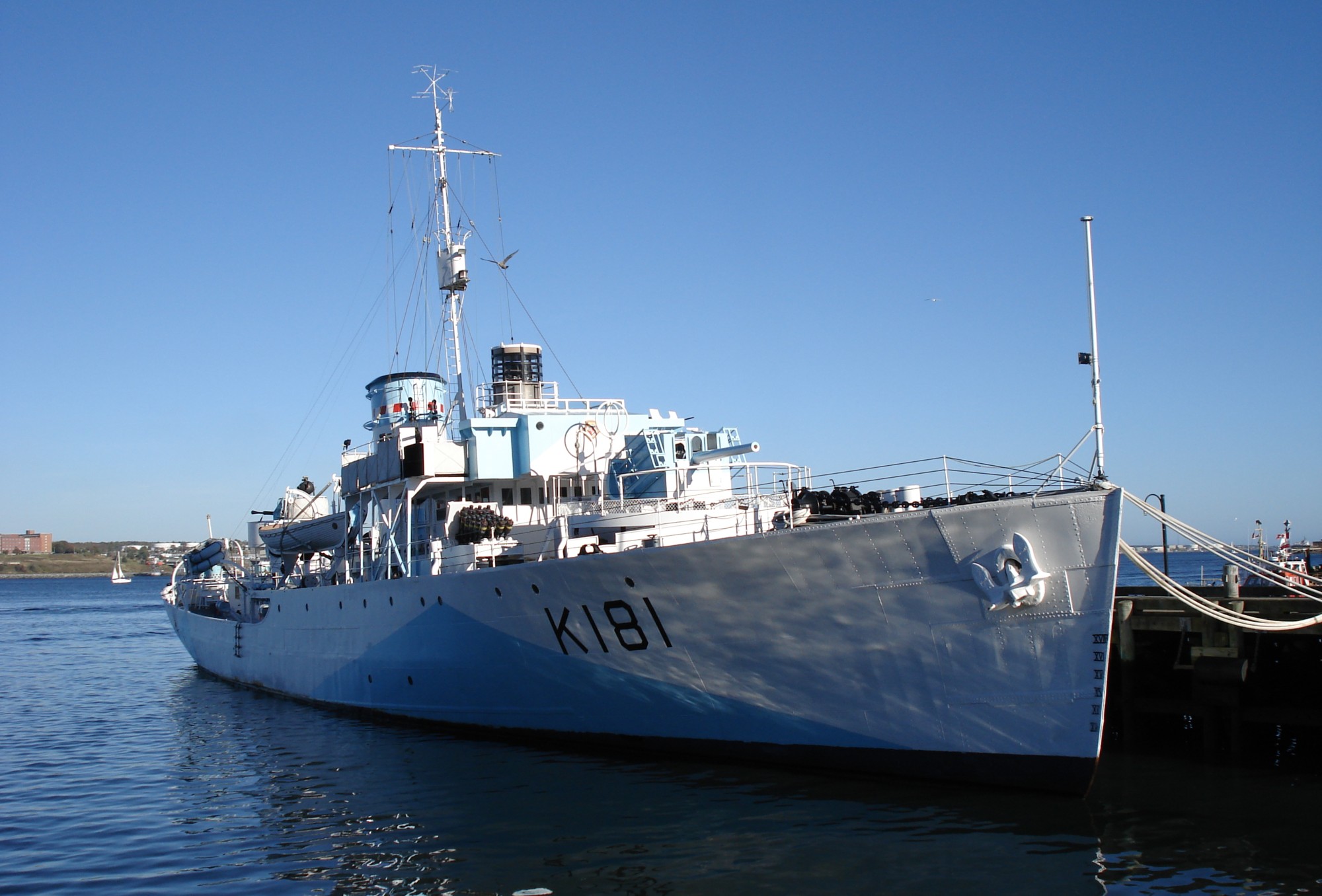|
HMCS Rimouski (K121)
HMCS ''Rimouski'' was a Royal Canadian Navy which took part in convoy escort duties during the Second World War. She fought primarily in the Battle of the Atlantic. She was named after Rimouski, Quebec. Background Flower-class corvettes like ''Rimouski'' serving with the Royal Canadian Navy during the Second World War were different from earlier and more traditional sail-driven corvettes. The "corvette" designation was created by the French for classes of small warships; the Royal Navy borrowed the term for a period but discontinued its use in 1877. During the hurried preparations for war in the late 1930s, Winston Churchill reactivated the corvette class, needing a name for smaller ships used in an escort capacity, in this case based on a whaling ship design. The generic name "flower" was used to designate the class of these ships, which – in the Royal Navy – were named after flowering plants. Corvettes commissioned by the Royal Canadian Navy during the Second World War ... [...More Info...] [...Related Items...] OR: [Wikipedia] [Google] [Baidu] |
Rimouski
Rimouski ( ; ) is a city in Quebec, Canada. Rimouski is located in the Bas-Saint-Laurent region, at the mouth of the Rimouski River. It has a population of 48,935 (as of 2021). Rimouski, whose motto is ''Legi patrum fidelis'' (Faithful to the law of our fathers), is located on the south shore of the Saint Lawrence Estuary, around 300 km downstream of Quebec City. It is the site of Université du Québec à Rimouski (UQAR), the Cégep de Rimouski (which includes the Institut maritime du Québec) and the Music Conservatory. It is also the home of some ocean sciences research centres ( see below). History The name Rimouski most likely derived from a Micmac word meaning "land of the moose". The city was founded by Sir René Lepage de Ste-Claire in 1696. Originally from Ouanne in the Burgundy region, he exchanged property he owned on the Île d'Orléans with Augustin Rouer de la Cardonnière for the Seigneurie of Rimouski, which extended along the St. Lawrence River fro ... [...More Info...] [...Related Items...] OR: [Wikipedia] [Google] [Baidu] |
Fo'c'sle
The forecastle ( ; contracted as fo'c'sle or fo'c's'le) is the upper deck of a sailing ship forward of the foremast, or, historically, the forward part of a ship with the sailors' living quarters. Related to the latter meaning is the phrase " before the mast" which denotes anything related to ordinary sailors, as opposed to a ship's officers. History and design In medieval shipbuilding, a ship of war was usually equipped with a tall, multi-deck castle-like structure in the bow of the ship. It served as a platform for archers to shoot down on enemy ships, or as a defensive stronghold if the ship were boarded. A similar but usually much larger structure, called the aftcastle, was at the aft end of the ship, often stretching all the way from the main mast to the stern. Having such tall upper works on the ship was detrimental to sailing performance. As cannons were introduced and gunfire replaced boarding as the primary means of naval combat during the 16th century, the ... [...More Info...] [...Related Items...] OR: [Wikipedia] [Google] [Baidu] |
Bowmanville, Ontario
Bowmanville is a community of approximately 40,000 people located in the Municipality of Clarington, Regional Municipality of Durham, Durham Region, Ontario, Canada. It is approximately east of Toronto, and east of Oshawa along Highway 2 (Ontario), Highway 2. Bowmanville was first incorporated as a town in 1858, but later incorporated with the neighbouring townships of Clarke and Darlington in 1974 forming the Town of Newcastle, which was renamed in 1994 to the Municipality of Clarington. Bowmanville is part of the Greater Toronto Area. History Settlers were attracted to the area by the farmland, and creeks for water mills. The lands which would later become Bowmanville were first purchased by John Burk, who began to clear the forest. Mills were built first on Barber's Creek (now called Bowmanville Creek), including one still standing, now called Vanstone's Mill, at the present-day intersection of King Street and Scugog St. More mills were built on nearby Soper Creek, including ... [...More Info...] [...Related Items...] OR: [Wikipedia] [Google] [Baidu] |
Bowmanville POW Camp
The Bowmanville POW camp, also known as ''Camp 30'', was a Canada administered Prisoner of war camp, POW camp for German soldiers during World War II located on 2020 Lambs Road in the community of Bowmanville, Ontario in Clarington, Ontario, Canada. In September 2013, the camp was designated a National Historic Sites of Canada, National Historic Site of Canada. In 1943, prisoners Otto Kretschmer and Wolfgang Heyda were the subject of an elaborate escape named Operation Kiebitz. Early history The camp was built as the Bowmanville Boys Training School. Two of the early buildings were completed in 1927. Boys were educated there until 1941, 14 years after it first opened; when the school was ordered to relocate and turned it into a Prisoner of war camp, POW camp. Bowmanville Boys Training School was relocated within Bowmanville to "Rathskamoray" (currently the Lion's Centre), although most boys returned home. Canadian officials had barely seven months to convert the boys' school ... [...More Info...] [...Related Items...] OR: [Wikipedia] [Google] [Baidu] |
Wolfgang Heyda
Wolfgang Heyda (14 November 1913 – 21 August 1947) was a German U-boat commander during World War II. War service Heyda entered the Navy in 1932, serving aboard the cruiser and studying at Mürwik Naval School, before joining the pocket battleship at the start of the war. From 26 November 1940 to 19 May 1941 Heyda commanded , part of the 21st U-boat Flotilla, for his U-boat commander training, then took command of on 21 June 1941, beginning his first war patrol on 11 November. Near Gibraltar Heyda's U-boat was involved in attacking convoy HG 76 which was heading to Liverpool. At dawn on 18 December ''U-434'' was sighted by the convoy's destroyers north of Madeira, in position and attacked with depth charges. ''U-434'' was forced to the surface and then rammed by the destroyer and sunk. Two members of ''U-434''s crew were killed and 42 were taken prisoner. Commander Frederic John Walker, , commander of the 36th Escort Group sank four U-boats on his first war patrol, inc ... [...More Info...] [...Related Items...] OR: [Wikipedia] [Google] [Baidu] |
Otto Kretschmer
Otto Kretschmer (1 May 1912 – 5 August 1998) was a German naval officer and submariner in World War II and the Cold War. From September 1939 until his capture in March 1941 he sank 44 ships, including one warship, a total of 274,333 tons. For this he received the Knight's Cross of the Iron Cross with Oak Leaves and Swords, among other awards. He earned the nickname "Silent Otto", both for his successful use of the " silent running" capability of U-boats and for his reluctance to transmit radio messages during patrols. After the war he served in the German Federal Navy, from which he retired in 1970 with the flag rank of commodore. Early life and career Kretschmer was born in Heidau near Neisse, then in the German Empire on 1 May 1912 to Friedrich Wilhelm Otto and Alice (née Herbig) Kretschmer. His father was a teacher at the local ''Volkschule'' (primary school), which Otto attended from 1918 to 1921. He then moved to a ''Realgymnasium'' (secondary school). In the aftermath ... [...More Info...] [...Related Items...] OR: [Wikipedia] [Google] [Baidu] |
Kriegsmarine
The (, ) was the navy of Nazi Germany from 1935 to 1945. It superseded the Imperial German Navy of the German Empire (1871–1918) and the inter-war (1919–1935) of the Weimar Republic. The was one of three official military branch, branches, along with the and the , of the , the German armed forces from 1935 to 1945. In violation of the Treaty of Versailles, the grew rapidly during German rearmament, German naval rearmament in the 1930s. The 1919 treaty had limited the size of the German navy and prohibited the building of submarines. ships were deployed to the waters around Spain during the Spanish Civil War (1936–1939) under the guise of enforcing non-intervention in the Spanish Civil War, non-intervention, but in reality supporting the Francoist Spain, Nationalists against the Second Spanish Republic, Spanish Republicans. In January 1939, Plan Z, a massive shipbuilding programme, was ordered, calling for surface naval parity with the United Kingdom, British Royal ... [...More Info...] [...Related Items...] OR: [Wikipedia] [Google] [Baidu] |
Operation Kiebitz
Operation Kiebitz was a failed German operation during World War II to organize the escape of four skilled U-boat commanders from a Canadian prisoner of war camp in Bowmanville, Ontario. The subsequent counter operation by the Royal Canadian Navy, Operation ''Pointe Maisonnette'', became a key engagement in the Battle of the St. Lawrence and was also successful in thwarting the Germans' plan. Prisoner escape plan The plan was developed by the ''Kriegsmarine'' in 1942 and was to be executed in September 1943. Horst Elfe, captain of ; Hans Ey, captain of ; Otto Kretschmer, captain of ; and Hans Joachim Knebel-Döberitz, executive officer of ''U-99'', would escape from Camp 30 in Bowmanville and make their way through eastern Canada to northern New Brunswick, where they would rendezvous with a U-boat off Pointe de Maisonnette on Chaleur Bay. Knebel-Döberitz was the former adjutant of Admiral Karl Dönitz and, along with Kretschmer, was thought to be the primary reason behind this ... [...More Info...] [...Related Items...] OR: [Wikipedia] [Google] [Baidu] |
Western Local Escort Force
Western Local Escort Force (WLEF) referred to the organization of anti-submarine escorts for World War II trade convoys from North American port cities to the Western Ocean Meeting Point (WOMP or WESTOMP) near Newfoundland where ships of the Mid-Ocean Escort Force (MOEF) assumed responsibility for safely delivering the convoys to the British Isles.Morison (1975) p. 319 Background On the basis of experience during World War I, the Admiralty instituted trade convoys in United Kingdom coastal waters from September 1939. Convoys gradually extended westward until HX 129 left Halifax, Nova Scotia on 27 May 1941 as the first convoy to receive escort for the entire trip from Canada. The American Neutrality Zone offered some protection in North American coastal waters until United States declaration of war in December 1941. Organization The Royal Canadian Navy organized the Halifax-based Western Local Escort Force in February 1942 as German U-boats began patrolling North American coast ... [...More Info...] [...Related Items...] OR: [Wikipedia] [Google] [Baidu] |
HX Convoys
HX convoys were transatlantic convoys in the North Atlantic during the First World War and in the Battle of the Atlantic in the Second World War. HX convoys sailed eastwards from Halifax, Nova Scotia in Canada, to Liverpool and other ports in Britain. They rendezvoused with BHX convoys from Bermuda ''en route''. After the United States entered the war, HX convoys began at New York. The HX series consisted of 377 convoys, with 17,744 ships. Thirty-eight convoys were attacked (about 10 per cent), with the loss of 110 ships in convoy; sixty stragglers were sunk and 36 lost while detached or after dispersal, with losses from marine accident and other causes, for a total loss of 206 ships or about 1 per cent of the total. Background An HX series had run in the Atlantic Campaign of the First World War in 1917 and 1918. HX convoys were revived in 1939 at the beginning of the Battle of the Atlantic and were run until the end, the longest continuous series of the war. HX 1 sailed on 16 ... [...More Info...] [...Related Items...] OR: [Wikipedia] [Google] [Baidu] |







